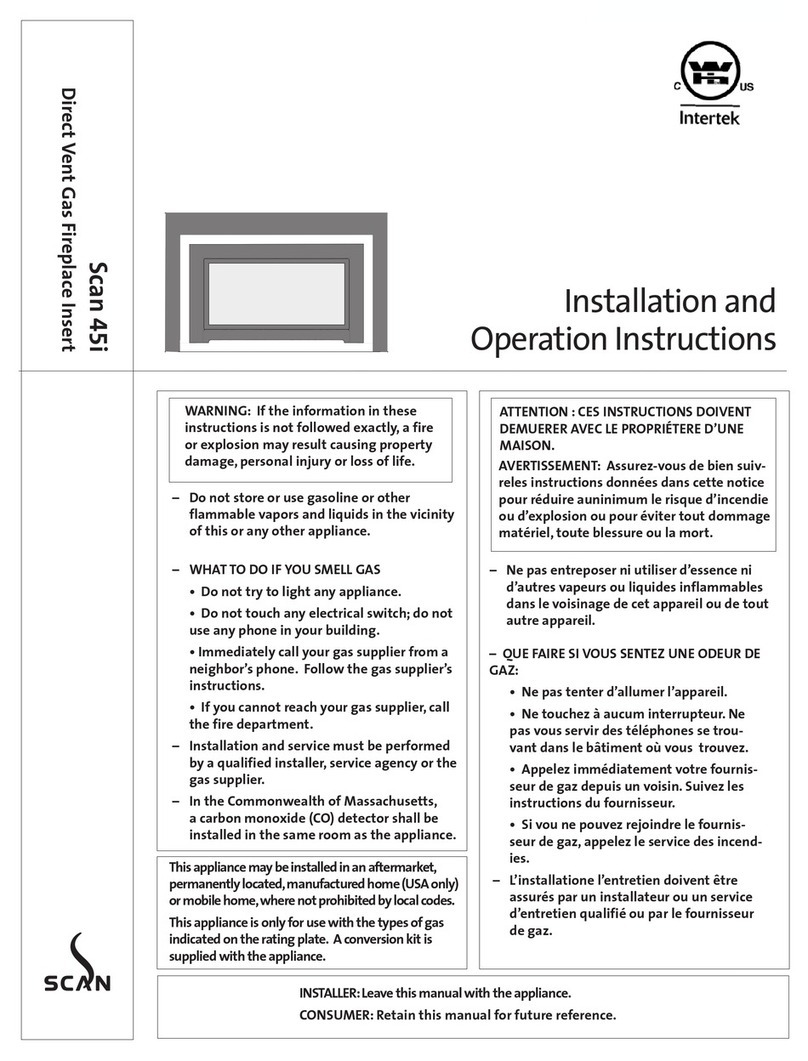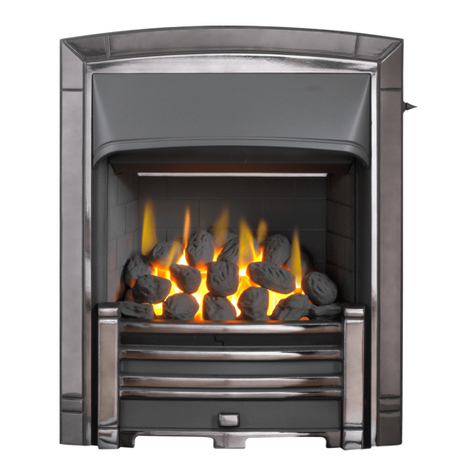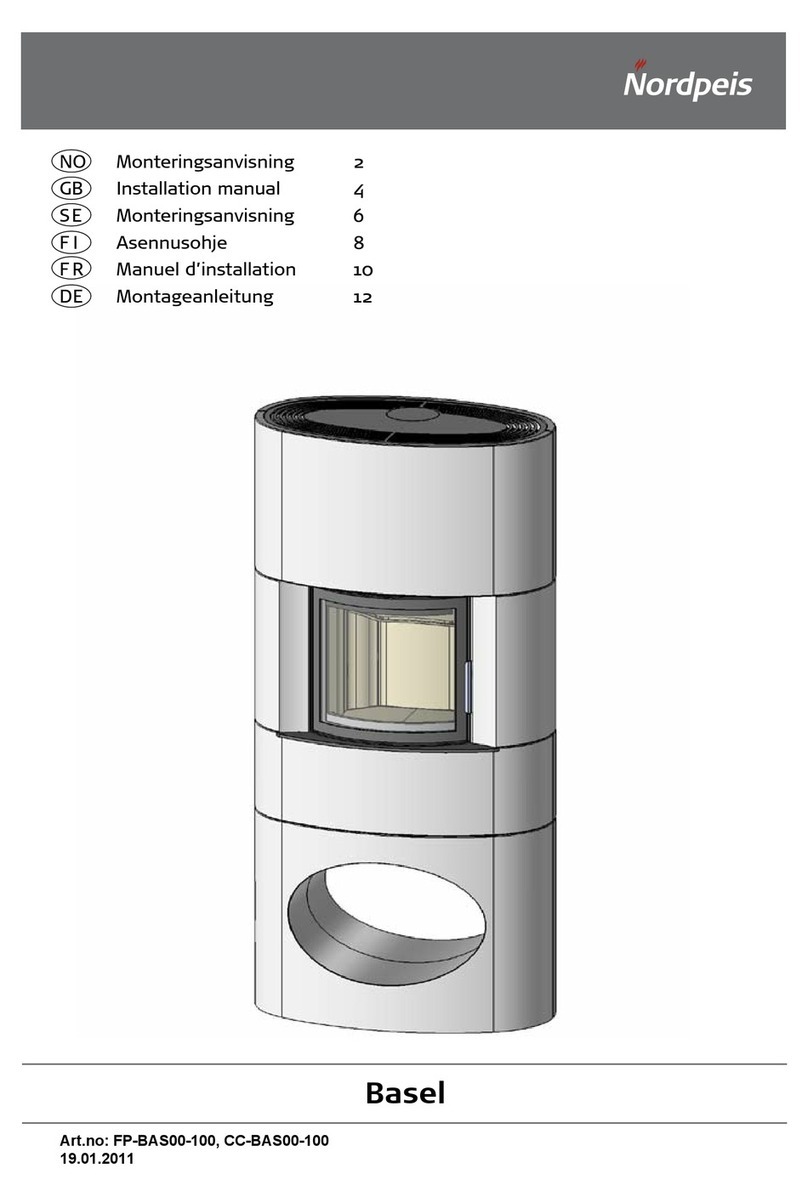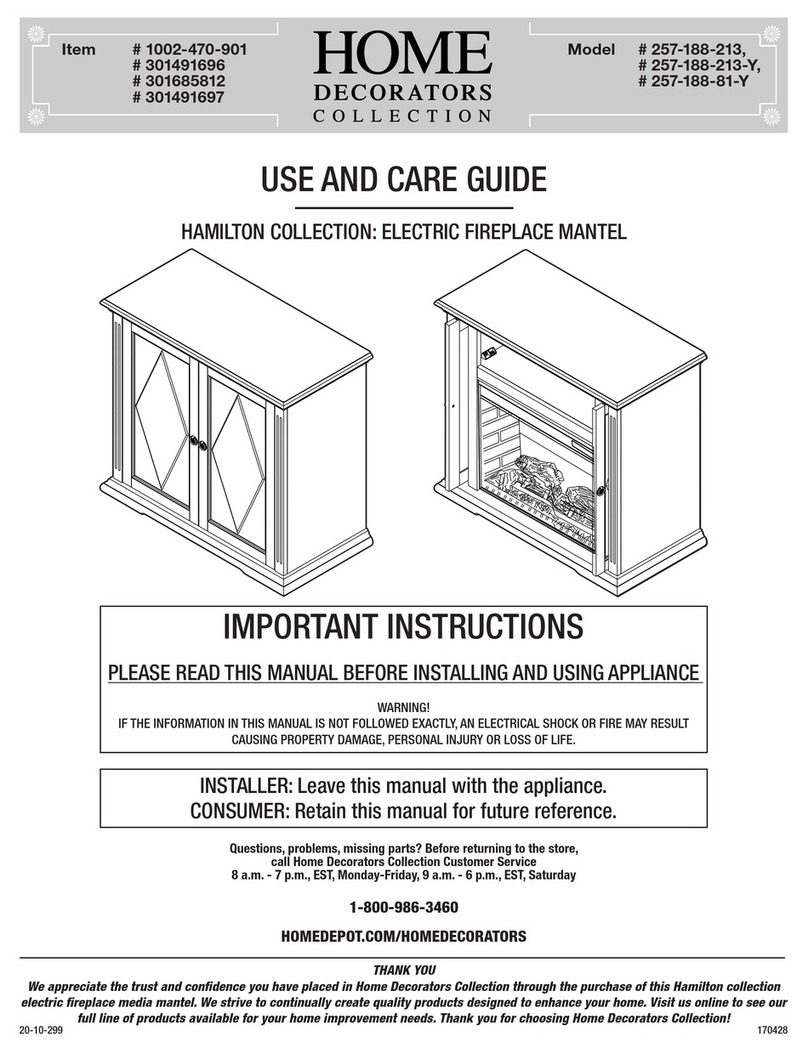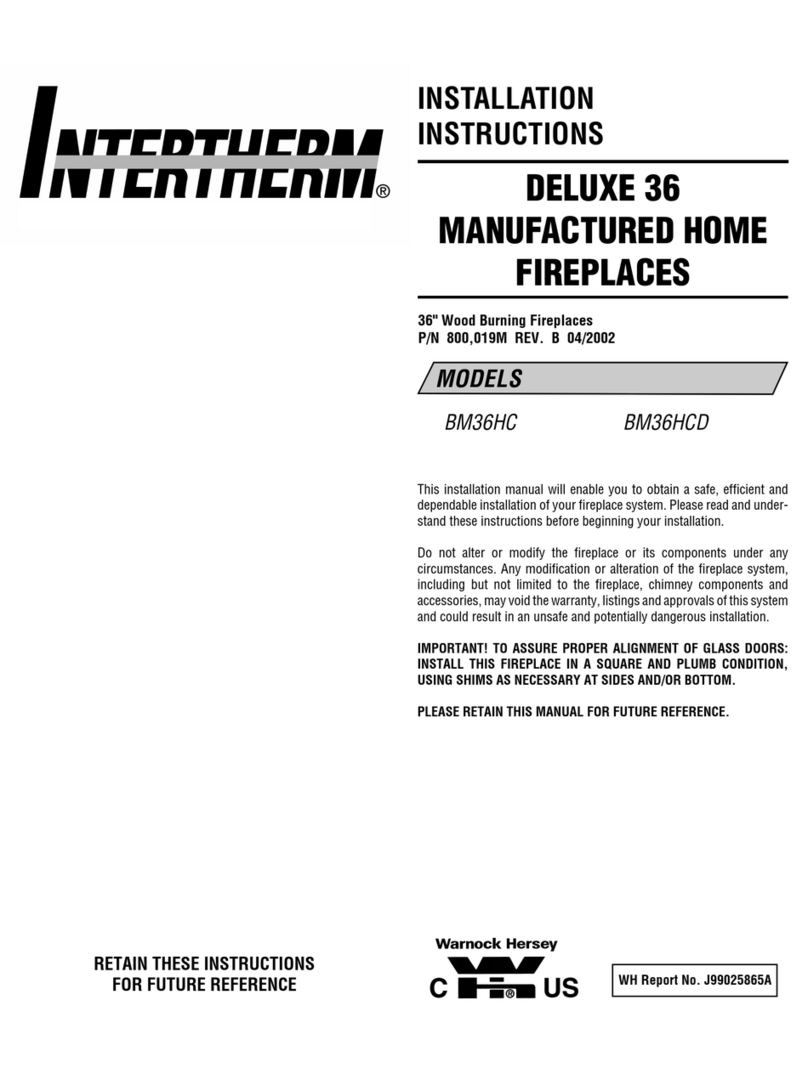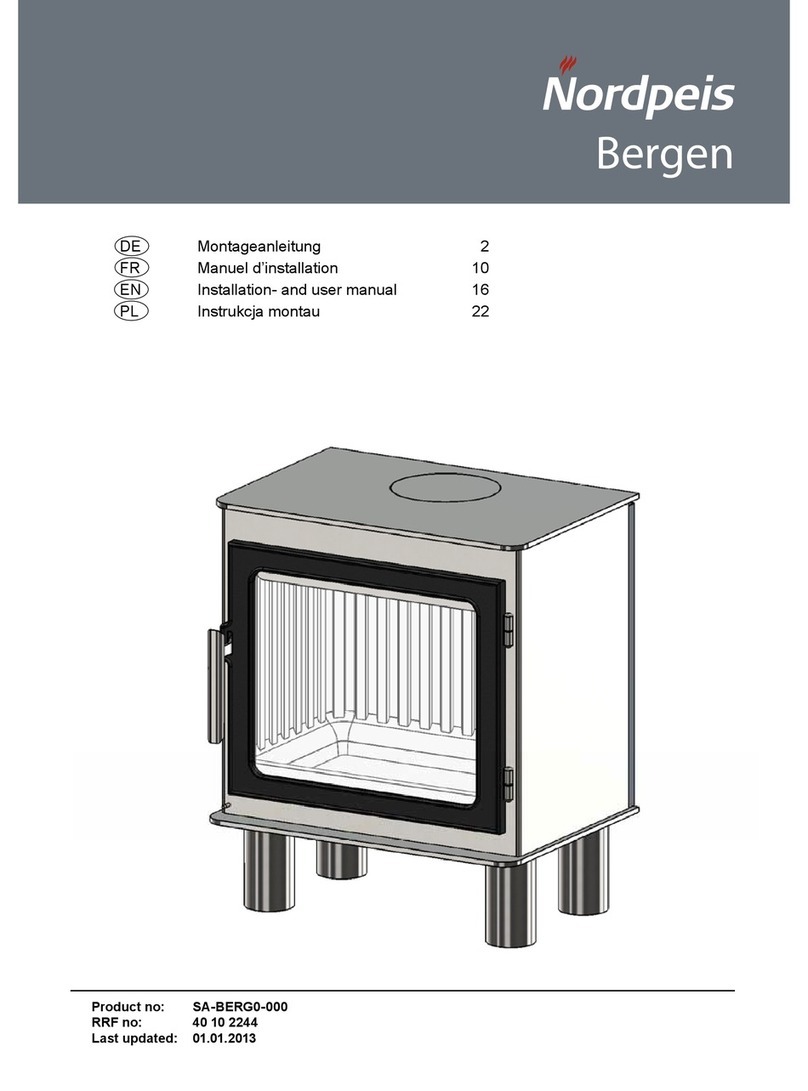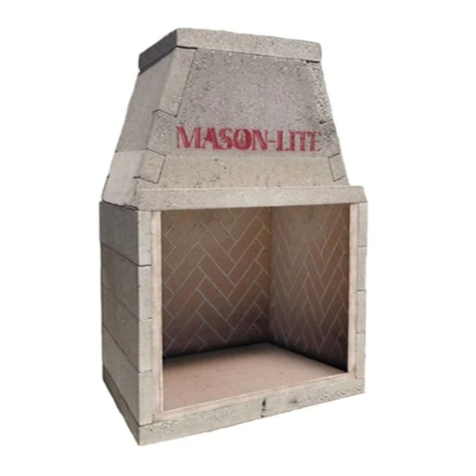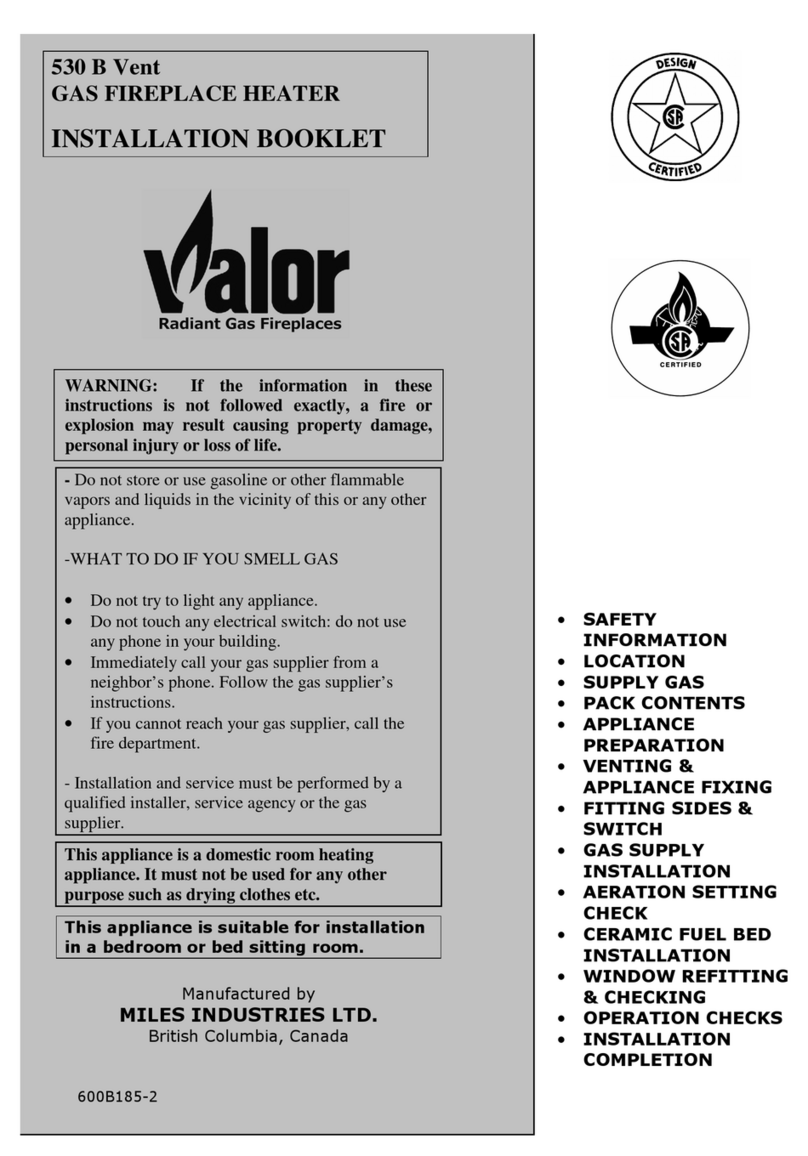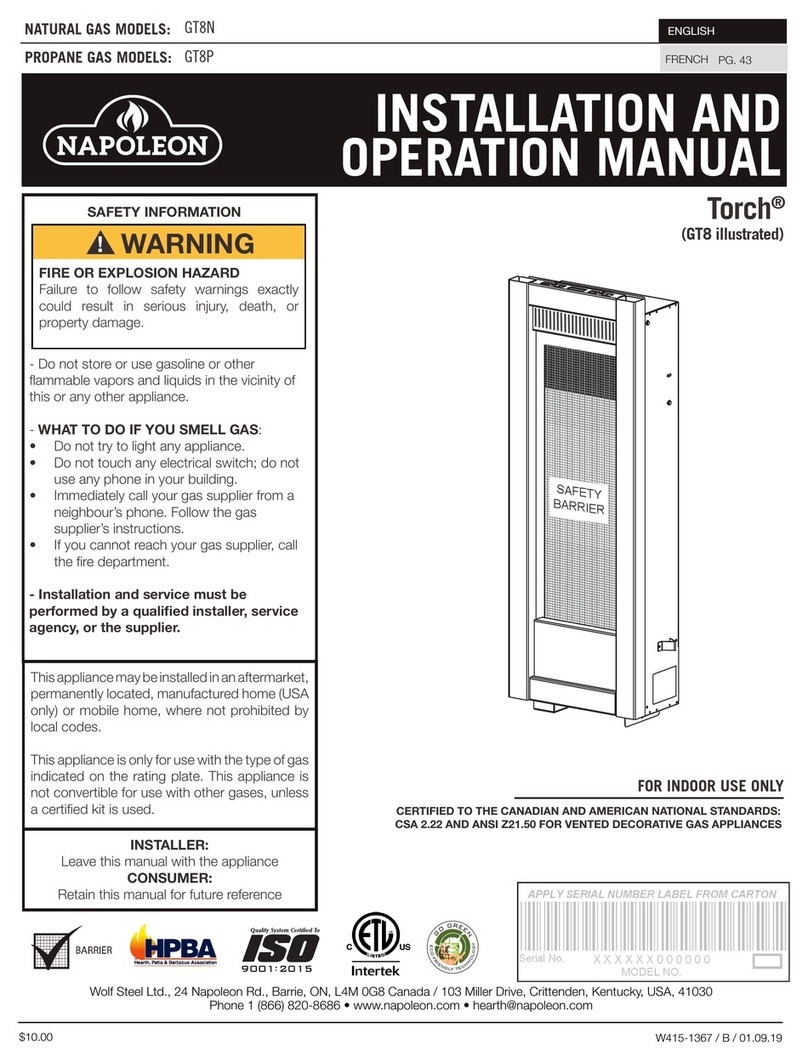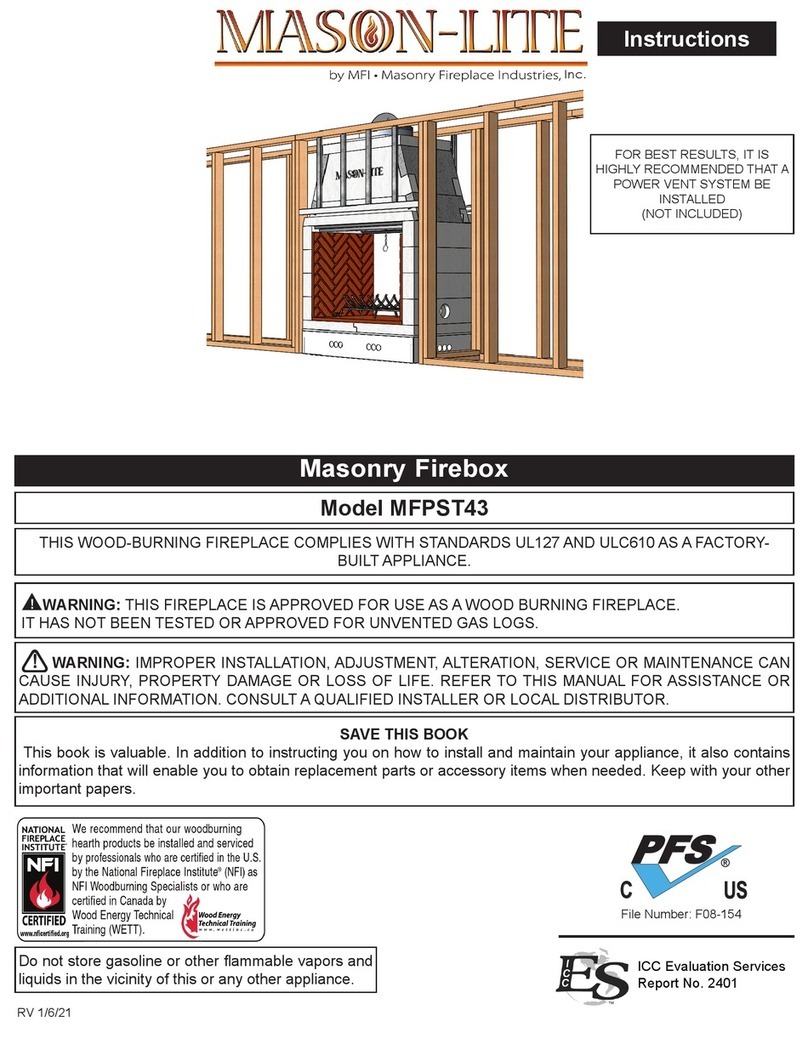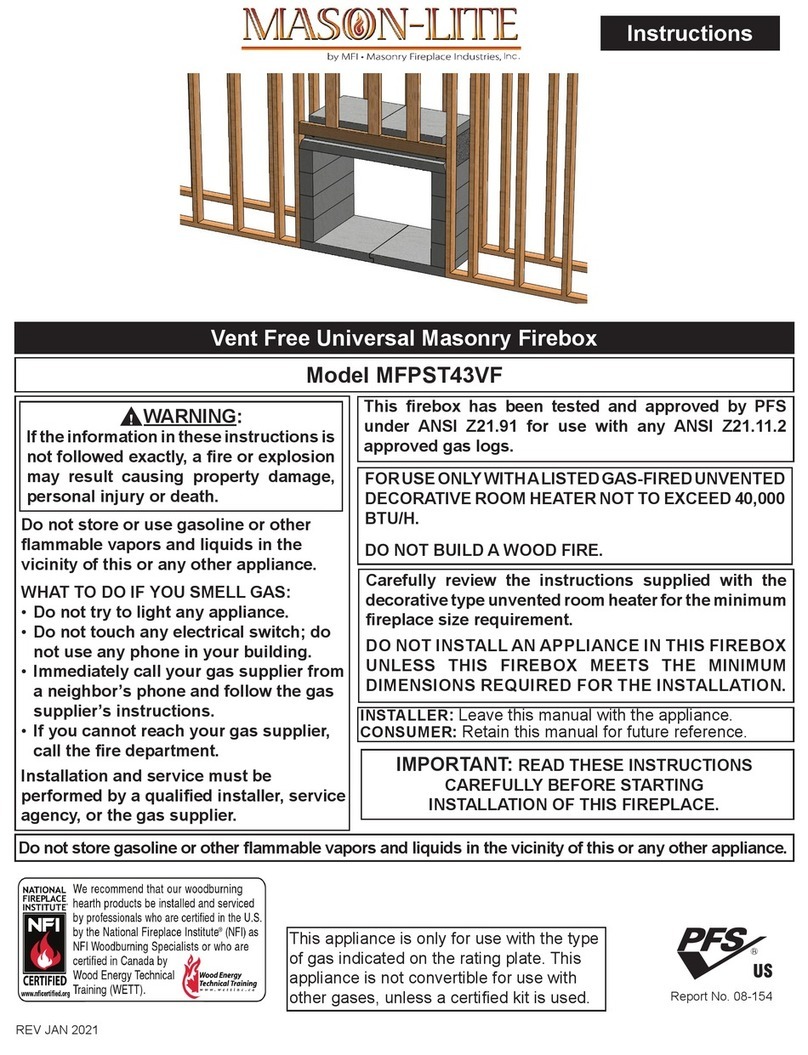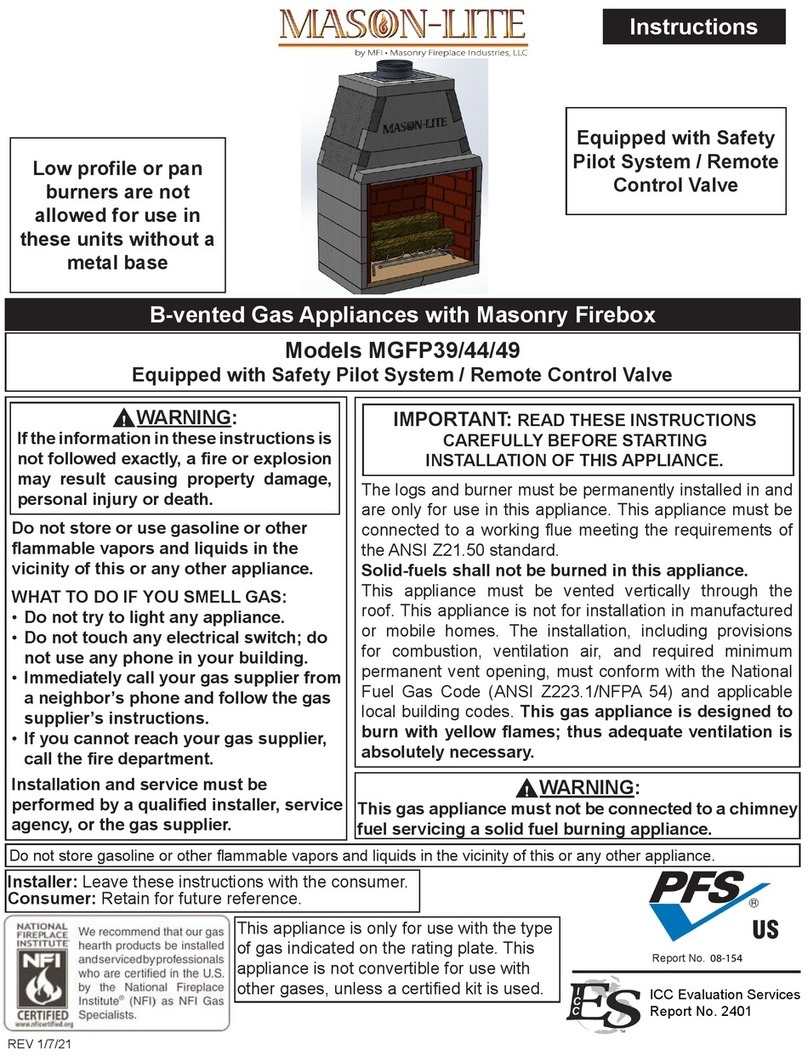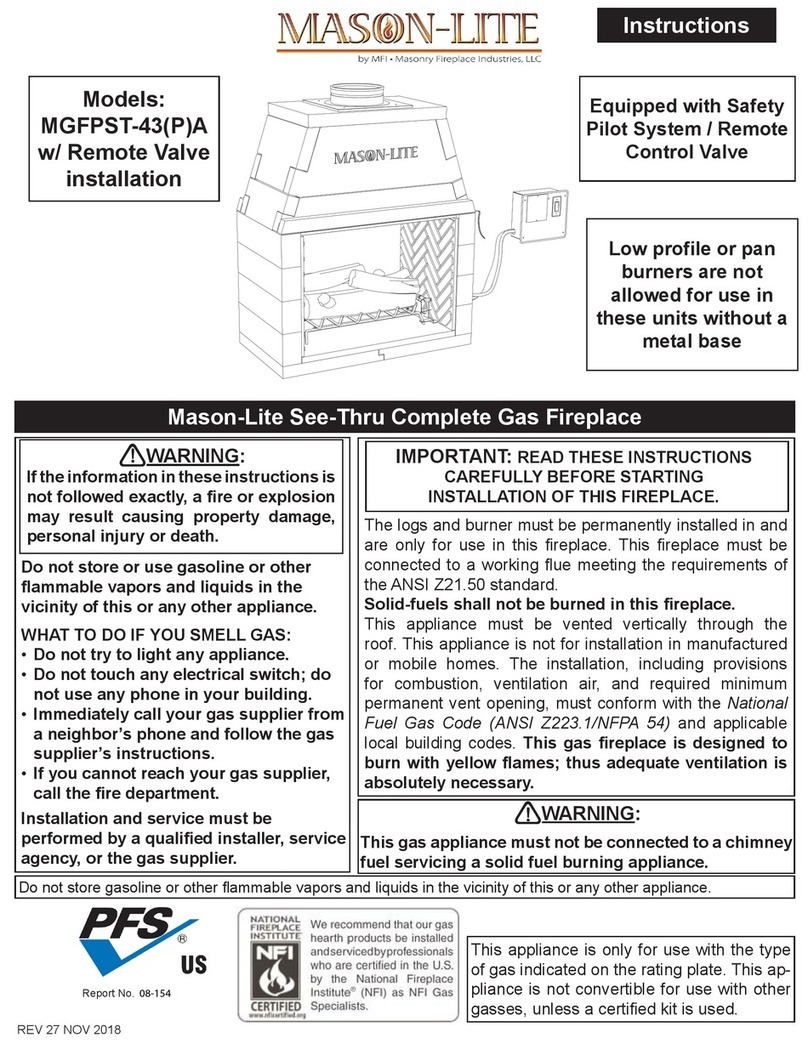
12
Important Pre-installation Information
Overview
You will nd that the Mason-Lite Fireplace is designed for
complete assembly at your construction site with all necessary
items delivered consisting of interlocking precast parts, 50 lbs.
of Mason-Lite mortar and rebar.
The parts of the replace are made of Mason-Lite’s incredibly
strong blend of specialty cement and a lightweight aggregate.
The design of the replace calls for the installation of a refractory
re brick liner. This should be a minimum of 1-1/8” thick. The
liner will be applied within the walls of the rebox. Modular
rebrick panels are also available from MFI.
Additional Materials Required:
1) Ready-Mix concrete - 2 cu.ft.
SURFACE CRACKS - The MASON-LITE FIREPLACES are
manufactured using high quality materials. During the drying
process, surface cracking may occur. These small cracks
(under 1/16” will not aect the replace safety or performance).
During the assembly process, ll surface cracks with thin-set
mortar and brush when drying for a smooth surface nish.
Leveling and Aligning Components:
It is important to assemble all Vent-Free replace components
ush, level and square. Since it is not intended that mortar
be used to lay a mortar joint of any measurable thickness as
is typical when laying brick or concrete block, adjustments in
component height and level alignments are accomplished with
the use of small shims. These shims can be tapped into place
to level and align components. Once the Mason-Lite Mortar is
set, the shims must be removed completely.
Be sure to re-grout any and all gaps where shims have been
inserted and then removed or where contact surfaces have
been separated by shim leveling.
Field Assembly Procedures
1) Mixing the MASON-LITE mortar – You will require a 50 lb.
bucket of MASON-LITE mortar which will be more than
enough to adequately ax all the replace components,
one to the next. The mortar is premixed and dry and
is to be used to adhere all the replace components.
Be sure to use clean water and work it up into a mixture that
is pasty but not lumpy. If it is too thin, the components will
not adhere. Some trial and error may be necessary. You will
want to apply the mixture with a standard grout bag.
2) Moisten all surfaces which will have grout applied prior
to assembly. This will minimize shrinkage and cracks
developing in the joint areas. Best way to accomplish this is
with a bucket of water and a large sponge. Dip sponge into
water and apply a liberal amount of water to the grout joint
surface several minutes before the part is to be assembled.
The water will absorb into the surface allowing the grout to
properly cure.
3) Assembly of the Components – Once you have found the
proper consistency of the mixture, load it into the grout
bag and then place the components together applying
the mixture directly to the components where they come
together. As a rule, you can gure that you should lay down
about ½” (one-half inch) of a thread of mortar. The line of
mortar should be approximately ½” (one-half inch) away
from all the edges of each separate component.
The mortar has a considerable amount of holding power so
do not overload the components with too much mortar.
4) You will notice that some mortar will “ooze out” when you
place the next component on top of or next to the component
you previously place. This is to be expected – it means the
two pieces have properly bonded -- and you will want to
swipe the excess away with a trowel. It is never intended
that the surfaces of the MASON-LITE components are to be
completely covered with mortar.
5) Do not apply the mortar in thick bands even if the component
you are working with is larger than the rest. You will want to
apply “stripes” of mortar in these situations.
6) Making Sure Components Are Level – It is extremely
important that you pay careful attention to how you are
assembling the MASON-LITE. Since every component
builds on the next, it is critical, that from the beginning, you are
checking that the components are tting together to be level
and ush. If you have to make any kind of an adjustment, do
not try to do it “by loading an opening” with mortar. That is
completely unacceptable, resulting in a replace that will not
be plumb or level. What you are advised to do is make use
of shims. You will nd these supplied with the MASON-LITE
and you can nudge them in between openings to achieve
the precision you need in making component adjustments.
7) Once you have removed the shims, you will want to cover
any gaps that may have resulted with the grout.
Warning: All surfaces where grout is applied must
have water sponged on several minutes prior to
assembly. This will minimize cracking of grout joint
and provide maximum strength.




















